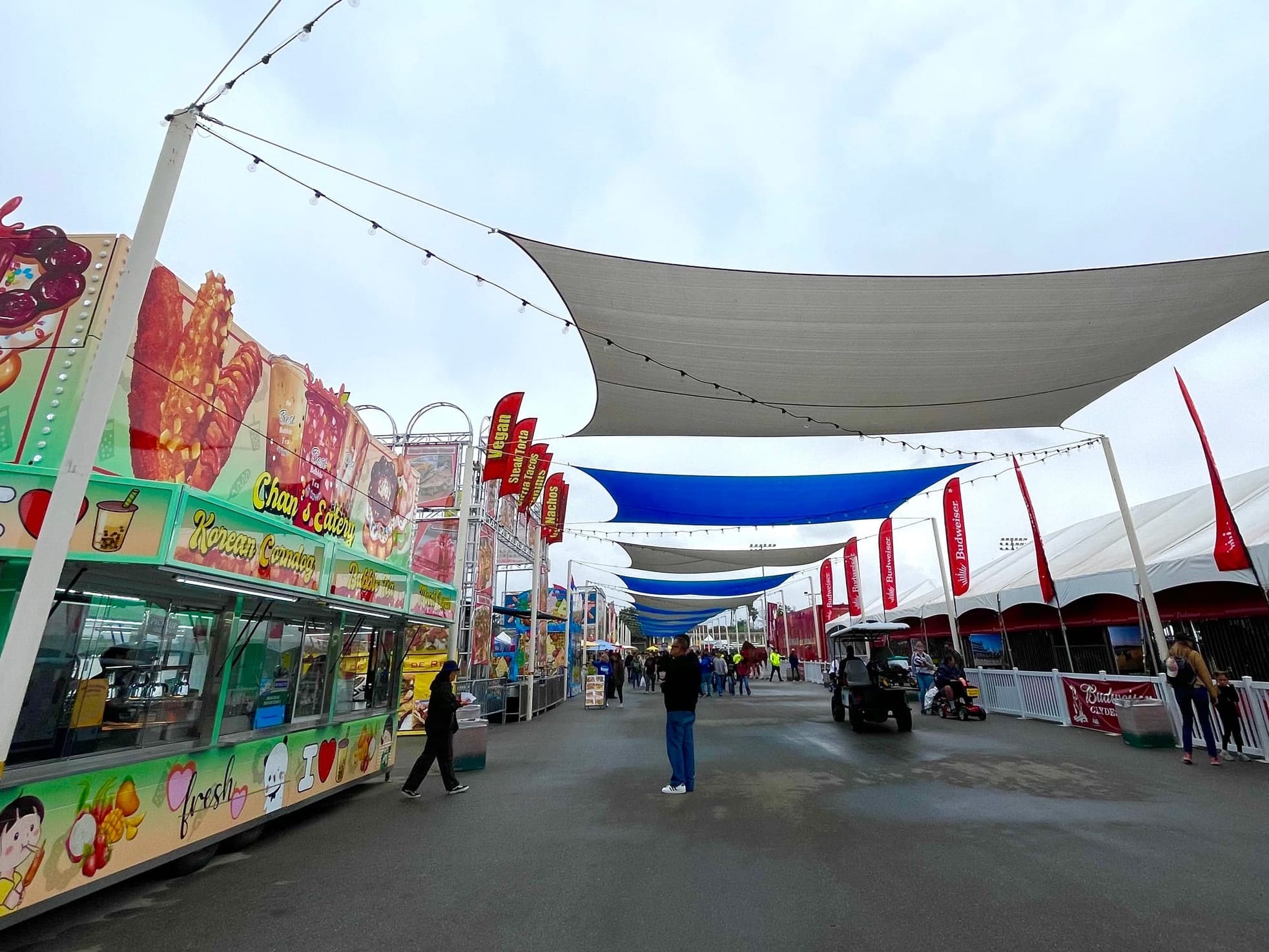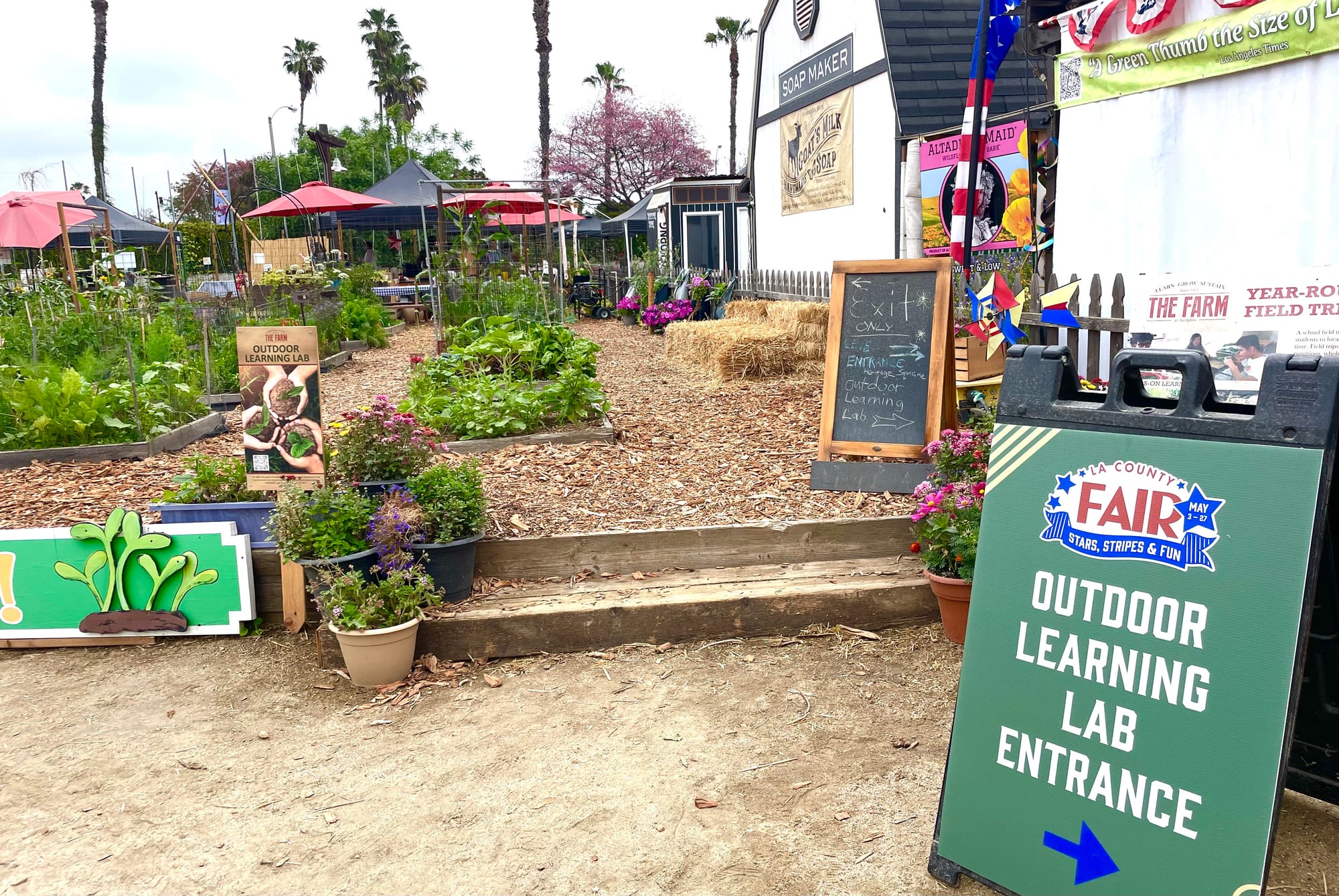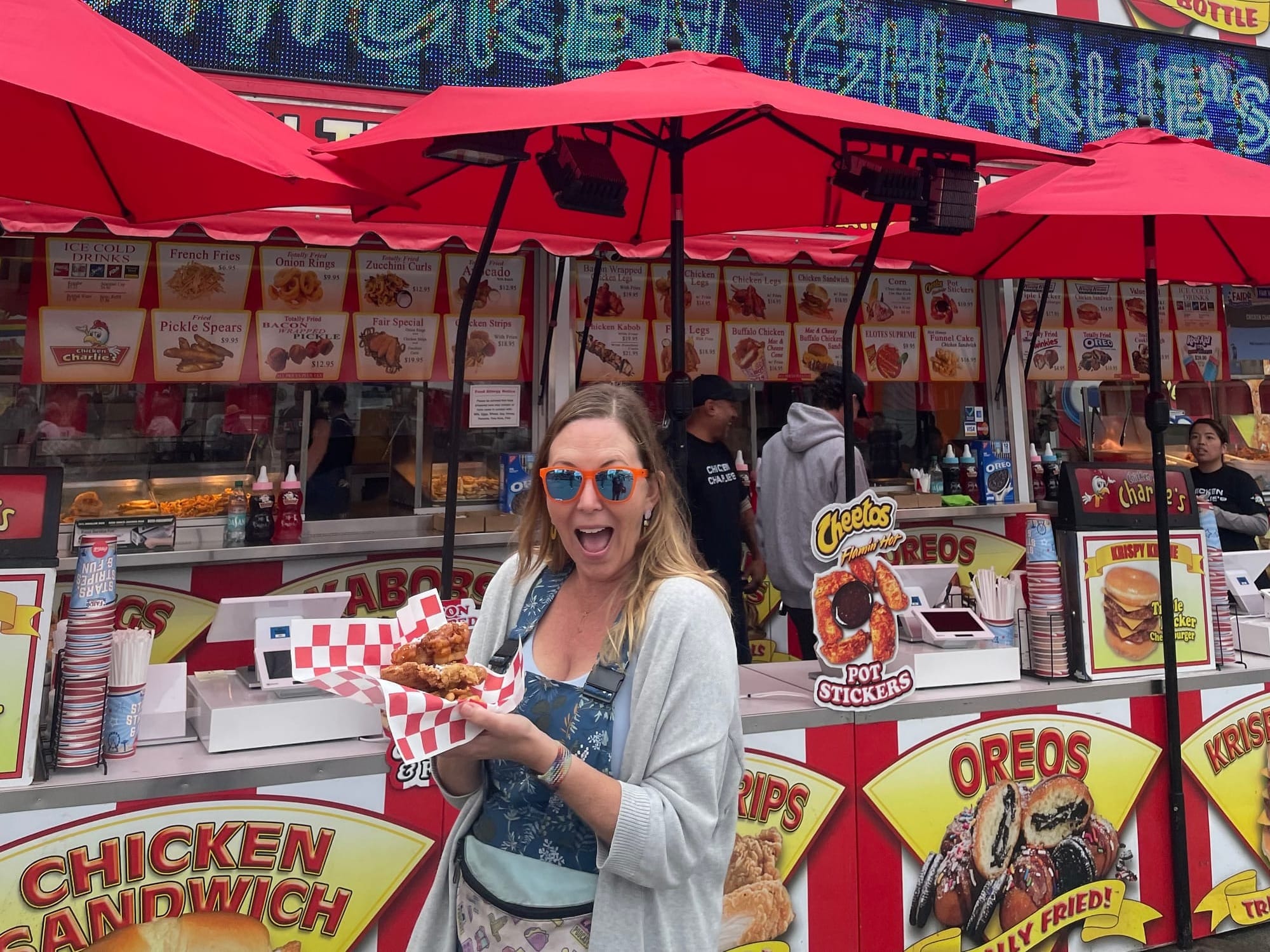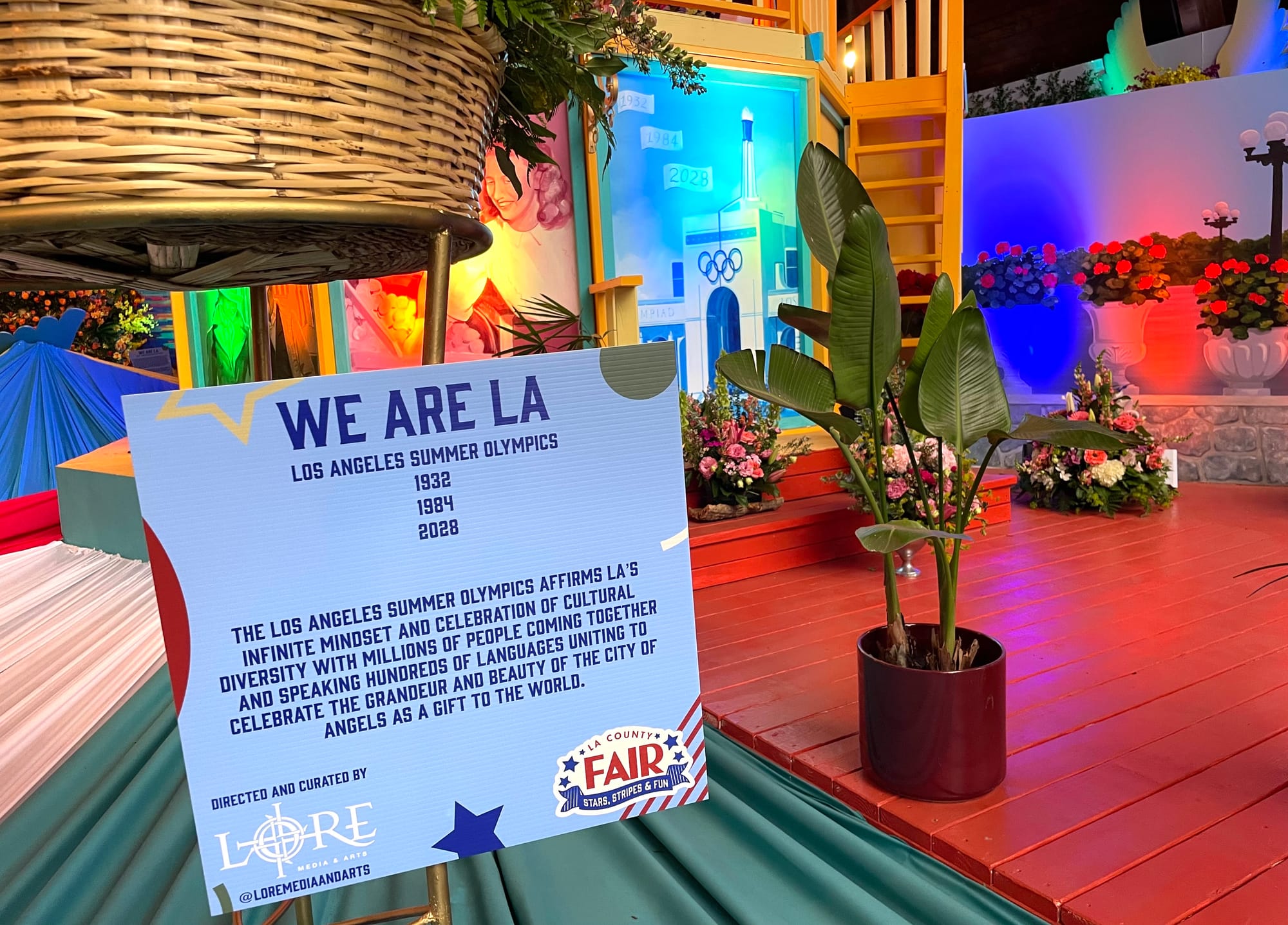Bump, set, spike
Santa Monica mounted a sustained, publicly transparent campaign to challenge what LA28 was offering. And, in the end, that's probably what sent the organizing committee packing for other shores
Learning how the LA County Fair took heat seriously is a warning for other megaevents planned during Southern California's increasingly dangerous summers

My body was ready for Spam fries. I had on loose-fitting overalls, a floppy sun hat, and a stick of 80 SPF sunscreen in my fanny pack. But as my Metrolink train headed east from Union Station, I wasn't sure I'd dressed quite right. From my seat, I was given a panoramic view of the annual phenomenon known as May Gray, where warmer air traveling over a still-very-cold ocean condenses into low-level clouds that keep Southern California's spring temperatures low. (See also: Graypril, June Gloom.) It sometimes burns off after a few hours, but not on this day. Not only had the marine layer followed me 40 miles inland, a light mist was falling as I walked inside the gates of the 102nd Los Angeles County Fair.
In 2021, after increasingly frequent heatwaves caused dips in attendance year after year, the fair made the decision to move from September to May. "The chilliest weather ever," the press release proudly declared this week as the fair wrapped up its 16-day run at the Fairplex in Pomona. During the 2019 fair, the last to be held in September, the average temperature was 86.4 degrees. The average temperature for this year's fair was a balmy 73 degrees. I can report that the clouds put no dampers on my fair-going experience, and may have even enhanced my ability to consume a hot honey funnel cake fried chicken sandwich. And learning how the LA County Fair took heat seriously is a warning for other megaevents planned during Southern California's increasingly dangerous summers.
Historically, August is LA County's hottest month, but researchers at NASA's nearby Jet Propulsion Laboratory recently confirmed what any Angeleno can feel in their armpits — local heatwaves are now persisting into September and October. Inland LA County, where Pomona is located, is the place most susceptible to these heatwaves "with strong increasing trends in frequency, duration, and intensity." There are other risks to holding the fair in the waning days of what have become very crispy summers. The fair was already canceled for the pandemic in 2020, but if it had opened as planned on September 4, 2020, attendees would have had to contend with blistering 117-degree days plus a smoke plume from hundreds of wildfires blanketing the state. On September 6, 2020, the Bobcat Fire, which would grow to become the second-largest wildfire in LA County history, ignited 30 miles away, forcing residents indoors to avoid inhaling toxic air and ash falling like snow flurries.
Fair officials had been having discussions about moving the dates for years, but couldn't imagine how to produce two fairs in such close succession to get the new schedule on track. Then came the pandemic. "The window of opportunity came the two years where we didn't have a fair," Walter Marquez, the Fairplex's president and CEO, tells me at their administrative office. "The conversations we had with the board were all saying, if we're going to move, we have to move now." As they started holding meetings with partners and exhibitors, fair officials strategized with adjacent counties to see where LA could be slotted into the regional fair lineup; LA used to be last, and now it's first. Despite having a year to rework the seasonal programming, there were some unintended consequences organizers just didn't anticipate, says Marquez. "That first year, after two weeks, I realized that we had made the wrong merchandise." So out with the tank tops, in with the sweatshirts.

Marveling at the midway in the mist was my fair companion Victoria Bernal, a writer and historian who runs the the immensely popular @LAhistory accounts. (Follow her: Twitter; Instagram; Threads.) In 2022, Bernal pawed through the Fairplex archives at Cal Poly Pomona to compile a collection of rare photos for the 100th anniversary, which now serves as a time capsule of "the hot years." Bernal is also a lifelong fair attendee, and she didn't realize until the dates shifted how much of her fair-going experience was shaped by the sweltering temperatures — or rather, avoiding them. "I worried about my 70-something mom walking across that hot asphalt in the September heat," she says. "We grew knowledgeable about the cooler places to rest." Bernal and I explored the fair's attractions that served as her personal cooling centers: a bench on the pretty shaded patio outside the Millard Sheets Art Center; comfy chairs stationed in front of cooking demos in the DIY Building. "But the best feeling, in terms of cooling down, was walking through the doors of the air-conditioned Garden Pavilion," remembers Bernal. She was right: even on a 67-degree morning, it's a soothing rush of refrigerated greenery. And out the rear door is The Hill, a forested fairground plot where outdoors-focused programming happens under thick, restorative shade.
But one can only hole up in the Garden Pavilion for so long. The majority of diversions are staged on a plane of asphalt that radiates heat like a cast-iron skillet — surrounded by even more asphalt to park 30,000 cars — and the fair had tried everything to cool it down. In 2014, after numbers had sagged during two particularly hot back-to-back seasons, the fair debuted $500,000 in heat-beating adaptations including 8,000 square feet of shade structures, fans, patio misters, and fan-powered patio misters. In 2017, even more mitigation efforts were put in place, with one of the exhibit halls converted into an ice rink complete with a tubing hill. And in January of 2020, before the pandemic forced the change in dates, the fair called its Hail Mary play: officials announced the fair would be repositioning as a night event, not opening until 4 p.m. on some days, and staying open until midnight on the weekends, in an effort to shift more programming out of the punishing midday sun.
"It was just grueling," says Craig Walters, who remembers his early days working in the fair's barns when he was in high school. "So hot. So horrible. All of our exhibits were in old livestock buildings with metal roofs and they didn’t even have fans back then." As director of AGRIscapes, the farm at Cal Poly Pomona’s Huntley College of Agriculture, Walters now manages 200 animals and daily programming for the fair's various barns. Before the seasonal switch, he remembers, it was a constant struggle just to get enough water to the livestock each day. "The animals, it’s not the best for them, but they can deal with it," he says. The humans, on the other hand? "We’ve had incidents in the past where people had heat exhaustion and passed right out."

When I ask if he had a sentimental reaction to the date change, Walters reminds me that the LA County Fair was actually first held in October. "Most county fairs really were harvest celebrations," he says, with the original goal of the LA County Fair to promote what was, in 1922, the top food-producing county in the country. While that might be an argument from purists to stick to late summer — although, technically, food in Southern California is harvested year-round — for Walters, it's not as much about hewing to tradition as it is about making formative farming-related connections. "Most people who live in LA County don’t know where their food comes from so this is an educational opportunity for us," he says. "We’re a college of agriculture looking for people who might be interested in that as a career." Those connections are much harder to make when it's 100 degrees out, he says. "This run of the fair is the best weather we’ve ever seen. The crowds were up from the year before. Everything went so well."
The crowds were indeed up. The fair reports that attendance climbed 8 percent over last year, with 787,843 ticketed attendees. That also means that, as of this year, the May dates have officially drawn more ticketed attendees than the 731,817 visitors in 2019 when the fair was still in September. (The reason those numbers might sound lower than some million-plus pre-pandemic figures is the fair changed the way the fair counted attendees, which used to include non-ticketed attendees like students on field trips.) But even those attendance numbers don't tell the whole story, says Marquez. "Before, when you're coming to the fair and it's triple-digits or high 90s, your experience is cut short because you, in essence, get burnt out by the heat," he told me. "What we're seeing now is that guests are staying longer." And if they stay longer, they theoretically spend more money.
Oscar Martinez has worked 15 fairs, including the past five at Chicken Charlie's, a fair institution where one can procure essential menu items like Flamin' Hot Cheetos potstickers. To him, the theory that attendees come earlier and stay later sounded correct. In September, he said, the crowd only tended to surge when the sun went down. In May, it was more of a steady stream throughout the day, even if it didn't feel as busy-busy. May had other benefits, he says, like three major holidays with popular weekends: Cinco de Mayo, Mother's Day, and Memorial Day. But the biggest plus to him was the weather. "I like it in May: not too hot, not too cold," he says. "I think it's a better time for the fair to be open."

The sun was just starting to peek out around this time, and the lines for Kool Aid inexplicably served in baby bottles started to form. As one of Martinez's coworkers rotated giant ears of corn over a mattress-sized charcoal grill, I note that this particular job would be unbearable in September. Did Martinez ever see people pass out? "Oh, definitely," he says. "That's the biggest problem we had."
Fair workers didn't necessarily want to talk about it on the record, but each had a story about someone fainting during the September dates. (A few workers had themselves fainted.) Some had scaled back the hours of their shifts or requested different roles to have access to air conditioning. Cooler temperatures seem to be a really good solution to stop people from keeling over from dehydration before Pat Benatar hits the mainstage. But they're literally life-changing for the people who can now make a living at the fair without risking their own livelihood. And Marquez confirmed as much: since the switch, he said, heat-related emergency incidents were down. One critique of the May dates I heard was "it just doesn't feel like summer." But what is summer when LA faces triple the number of dangerously hot days? Is blacking out for a pineapple Dole whip dill pickle sundae worth it? Moving the fair to May undoubtably saved lives.
Megaevents don't always heed such warnings. Before the 2020 Tokyo Olympics, a group of Japanese scientists gathered heat and humidity data along the city's marathon route and strongly urged rescheduling the games to fall. That didn't happen, even after organizers were given their own window of opportunity similar to the LA County Fair when the pandemic forced the games to be held a year late and without spectators in 2021. And sure enough, Tokyo athletes and volunteers were "tortured" by the hottest Olympics in history, with temperatures topping 93 degrees with high humidity several days in a row. Adaptations were made, some at great cost, including changing the marathon route. But the whole thing seems pretty ridiculous once you learn that the previous time Tokyo hosted the Summer Olympics, the city moved the games to October to avoid the heat — in 1964! Four years later, Mexico City also opted to hold the games in October due to heat concerns. Yet despite similar warnings from scientists for 2024, this summer's Olympics will be held in Paris from July 26 to August 11, during the very same dates of the 2003 European heat wave that resulted in an estimated 15,000 excess deaths just in France.

The reason that LA's 2028 games are being held from July 14 to July 30 (Olympics) and August 15 to August 27 (Paralympics) isn't necessarily because of tradition. It's because those are the dates that UCLA's dorms, which are serving as athlete housing, will be student-free. What if it's July 2018 hot? Hopefully there will be shade structures and patio misters and at least a few more trees. Perhaps organizers can move some events to the evening or towards the coast, although studies show LA isn't cooling down at night like it used to and microclimates are no match for high humidity. On the other hand, maybe we could avoid all this if someone with lots of money builds a brand-new Olympic Village — we need the housing anyway! — and gives athletes the greatest gift of all: competing in June Gloom.
Back at the fair, the sun finally broke out for good right at 3 p.m. After walking most of the fairgrounds in blissfully overcast skies, the asphalt began to steam beneath our feet. The Wild River ride, with its epic splashdown, looked inviting. Kids begged their parents for Dippin' Dots. The most strenuous thing I had done that day was lift a locally brewed hazy IPA to my lips in the beer garden. But after 15 minutes in the sun I was sweating. It was already getting too hot. 🔥